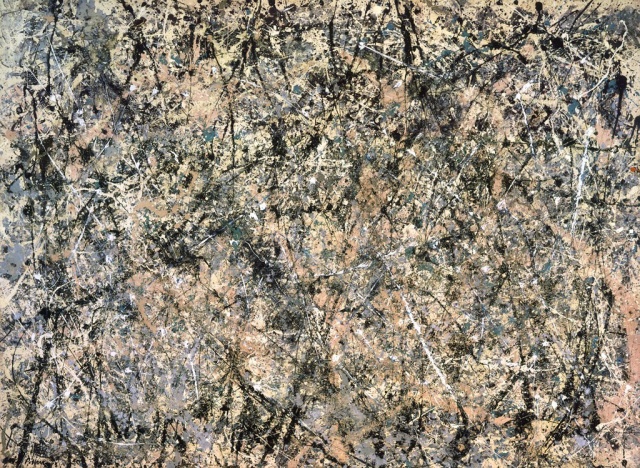
Lior Shamir, a computer scientist at Lawrence Technological University, has taken a series of image analysis algorithms and shown that they can discriminate between real Pollocks and pieces painted in an attempt to mimic his style…
First, the software runs through a variety of processes that identify basic features of the image such as “textures, colors, edges, shapes, fractals, polynomial decomposition of the image, and statistical distribution of the pixel intensities.” Next, it performs various transformations on the image (Fourier transforms, wavelet analysis, and so on), and computes values from those.
By comparing multiple images from a single source, it identifies the individual computations that provide the most consistent information about the source. Then, given a new image from an unknown source, it performs the same calculations and sees if the results are similar to its training set or not. If they’re sufficiently similar, the work is likely to be in the same style as the artist’s and probably by the artist him or herself.
via Ars Technica
Image: National Gallery of Art





